12 May 2022
![]() 19 mins Read
19 mins Read
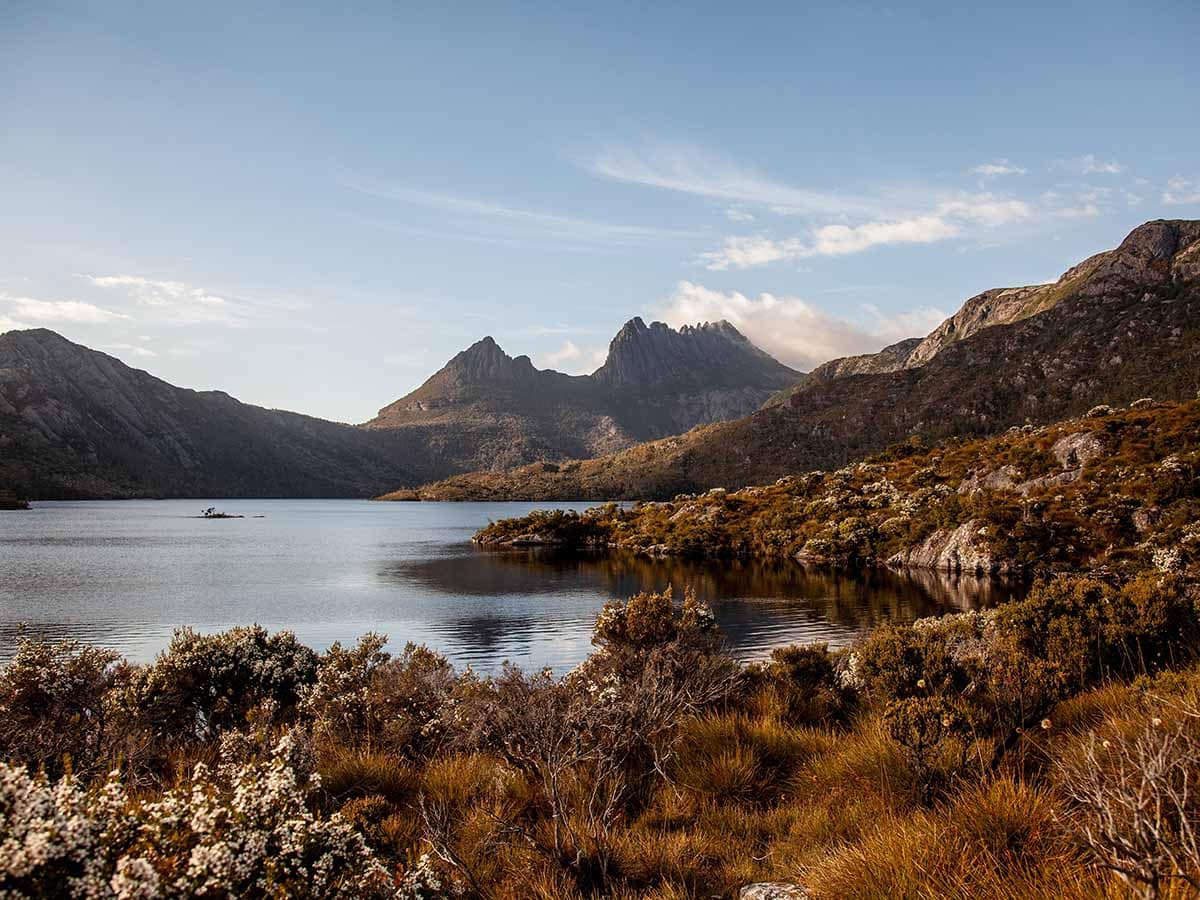
Storied in outback folklore, ‘The Gibb’ is both emphatically terrestrial but entirely otherworldly. As far as journeys go, this intrepid drive quietly tattoos an everlasting ownership across your heart with its penetrating beauty and consuming remoteness. Yet it’s not for the timid of heart.
Corrugated roads rearrange the marrow of your bones, toothy reptiles lurk in dark waters, seemingly fatalistic bovines lurch into the path of your 4WD, and backpackers (overwhelmingly German and stalking profound isolation) populate campgrounds.
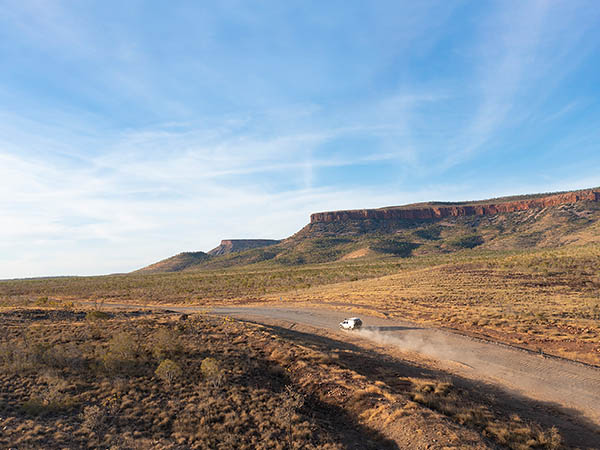
Embrace the outback along Gibb River Road. (Image: Tourism Western Australia)
The 660-kilometre road trip from Derby to Kununurra, minus detours, was laid in the 1960s as a means of shuttling cattle from station to station. But today, it’s better loved as a roughly two-week-long adventure drive that lures everyone from senior explorers to the aforementioned backpackers, and naively ambitious families.
In Australia’s North West, the first sensory bafflement comes at Broome, where most people launch their Gibb River Road exploration. Here, the contrasting collision of iridescent blue ocean and the ochre cliffs of the Kimberley resets your parameters for appropriate coastal colour palettes.
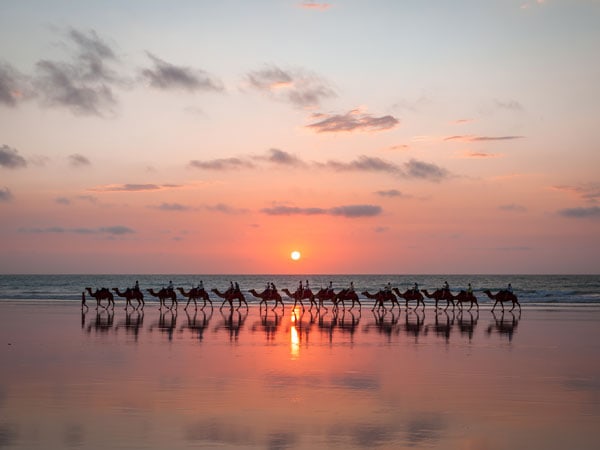
Ride a camel at sunset in Broome, WA.
But as you drive from the revitalising blue of crystalline waves, you find yourself following an endless spectrum of warm tones. Red pindan is displaced by tyres and, in turn, displaces many a tyre.
Cream-coloured dust seeps into every seam of every item. And the King Leopold Ranges bathed with the highlighter-pink of sunset are set ablaze until the deep mauves of dusk descend to cool everything down.
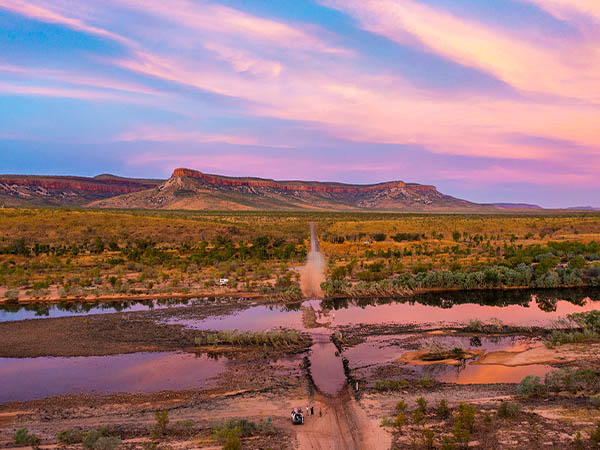
The sunset puts on a spectacle of vibrant colours each evening in the Kimberly. (Image: Tourism Western Australia)
Then, there are the night skies. They deliver a transformative surprise on your first night free from light pollution. You might just glance up as you make your way to the Windjana Gorge Campsite toilet block and – bam! – you’re anchored mid-step as the Milky Way unfurls in all its glittery loveliness above. This moment reveals a supreme awareness of your miniscule part in the universe, alongside envy for astrophysicists and their vocational stargazing.

Marvel at the glittering night sky in the Kimberly region. (Image: Tourism WA)
As you wiggle your way along, there are unmissable detours that make this journey exceptional. In the Napier Ranges, Windjana Gorge has an almost-unfathomable history as a reef system circa some 350 million years ago. Let your hand brush over the ancient limestone walls that were once home to Paleozoic fish and keep a lookout for their reptilian descendants lounging in pools. Don’t worry, they’re just freshies.
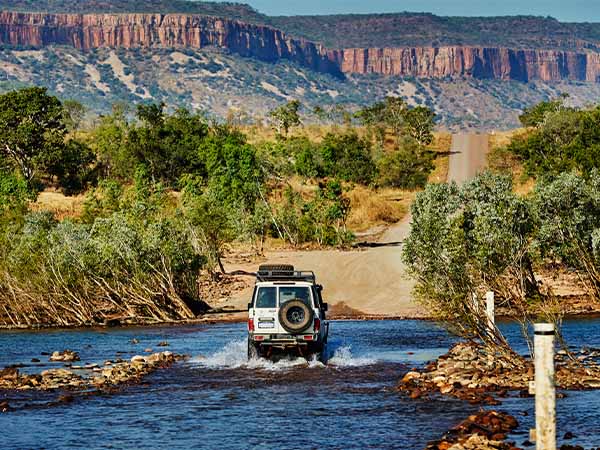
Embark on an adventurous journey into the breathtaking wilderness along the Gibb River Road. (Image: Tourism Western Australia)
Just 33 clicks up the road, enjoy the opportunity to get knee-deep in freshwater croc territory at Tunnel Creek. A locale of acute significance, this was the Waterloo of famous Indigenous leader Jandamarra, who stood his ground against exploitation but was ultimately fatally wounded here at his hideout.
These days, it’s more chillout than hideout, as lazy freshies loll in the cave’s shallow waters, watching with vague contempt as trepidatious tourists slosh by, guided through the darkness by a thin beam of torchlight.
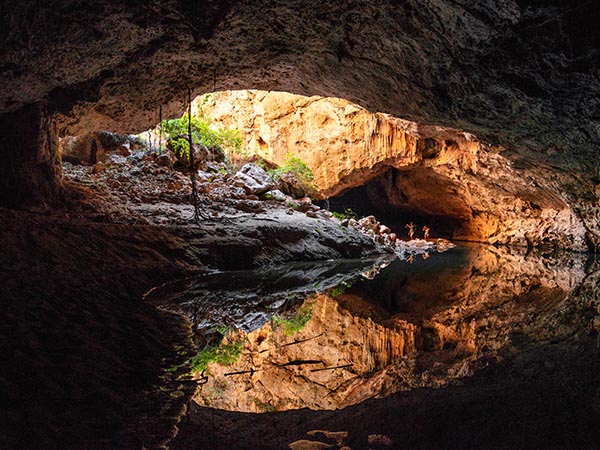
The beautiful Dimalurru (Tunnel Creek) is a culturally significant site for the local Bunuba people. (Image: Tourism Western Australia)
There are also gorges pitted with transcendent pools for plunging. Wild swimming in this way is an inimitable experience. Paddling out in surrounds as dreamily unpolished as the Australian outback has a way of storming new frontiers of relaxation.
Take your pick of gorges along, or just off, The Gibb. There’s Adcock Gorge, only five minutes off-route, which makes a quick dip irresistible.
Horseshoe-shaped Galvans Gorge is stirred by a seasonal waterfall and is accessed easily by an achievable trail.
Manning Gorge is shouldered by cooling cliffs; it takes a bit of work to hike the three-kilometre track for the pleasure of a dip, but this stunning waterhole pays big dividends for your efforts.
But Dalmanyi (or Bell Gorge) is perhaps the watery emerald in the tiara. You’ll need to allocate the heft of the day here and, at 30 kilometres from The Gibb, it’s a significant side-step. But you can spend the night at Silent Grove Campsite to make it worthwhile. Scramble over a rocky creek, then up to descend into the tiered gorge into which waterfalls cascade in silvery ribbons.
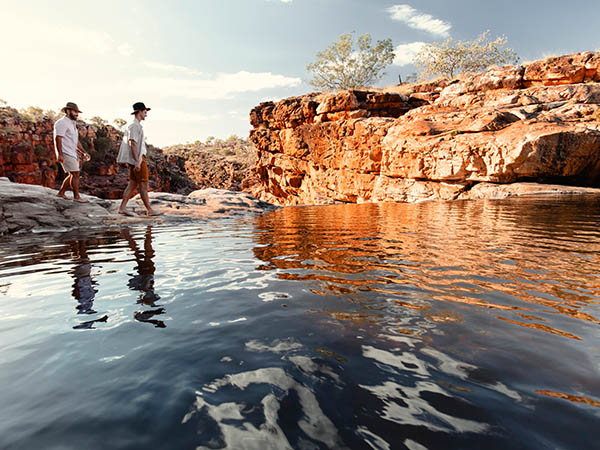
Detour for a refreshing swim at the stunning Bell Gorge (Image: Tourism WA)
Roughing it in campgrounds, such as Silent Grove, which is accessed exclusively by 4WD vehicles via a rib-rattling road, is undeniably a huge drawcard of this road trip. But you’re not letting anyone down if you leave your swag stowed for a few days in favour of a downy pillow at the El Questro Homestead.
From here you can lap up the luxury of chef-made meals, take incredible guided tours, such as fishing, cultural and scenic flights, and generally absorb the surrounding environment with a crisp glass of wine from your suite.

Take the iconic drive along Gibb River Road to El Questro.
Don’t hurry from El Questro, but when you do return to the dusty road, you’re only an hour-and-a-half from The Gibb’s full-stop of Kununurra.
Lake Argyle and the Bungle Bungle Range await to jostle for your attention. With eyes magnetised to Purnululu National Park’s banded domes, the journey hovers ethereally in the near-past.
But you’ll find, while the memory may erode a little at the edges, your wandering heart will remain sworn to this journey ever after.
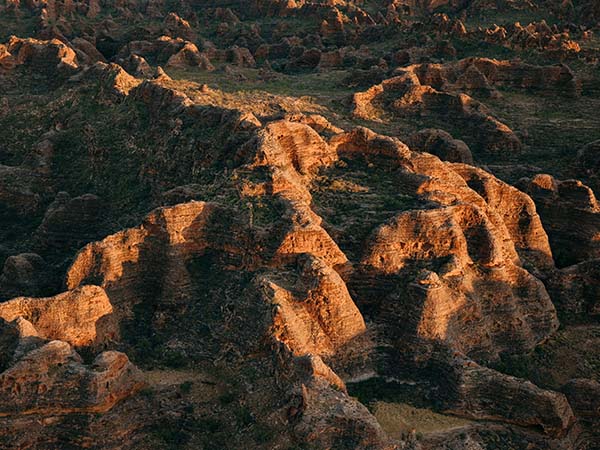
Discover the magnificent, flowing rock formations in the Bungle Bungle range. (Image: Tourism Western Australia)
660 kilometres
Words by Lara Picone
The flight from Sydney to Melbourne is one of the world’s top 10 busiest air routes (according to flight data analyst OAG), all the better for making the 845-kilometre inland drive, mostly along the Hume Motorway, a delightfully uncrowded option.
This is one of those drives that most bookmark as something they will do ‘one day’. But it really is worth prioritising for its lovely outlook to rolling hills and flat plains seemingly bleached by the sunshine into a perfect palette of taupe, beige and earthy greens, and its big-name country and regional towns on both sides of the border.
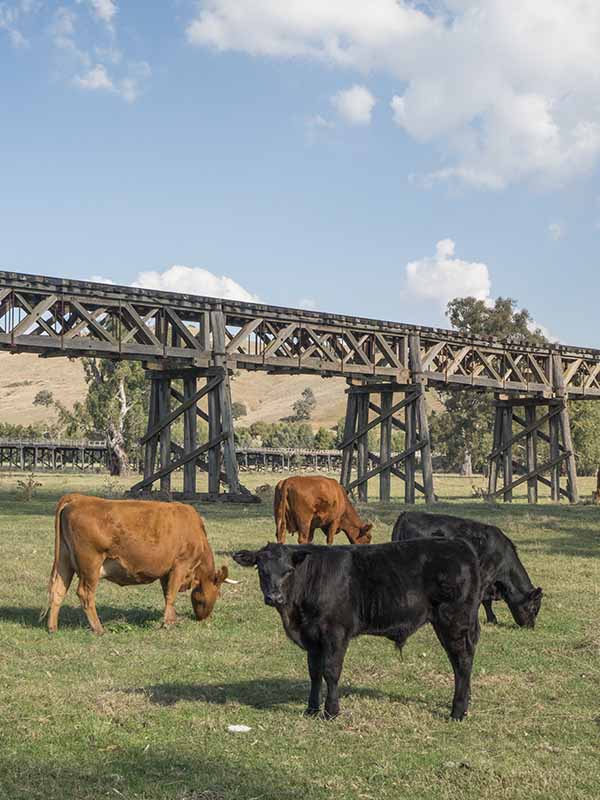
Kick back with some friendly locals at picturesque Gundagai, an ideal stop-off between Sydney and Melbourne. (Image: Destination NSW)
While limited stops will get you to the outskirts of the Victorian capital in about 8.5 hours, taking a few days transforms the journey into an experience in its own right rather than just a means of getting from A to B.
In NSW, towns like Goulburn, Collector, Jugiong, Gundagai, Wagga Wagga and Albury are all an easy side trip from the highway, and offer up delights as divergent as canine statues to regional art galleries to award-winning accommodation options.
Plan to spend your first night at either the stylishly revamped heritage pub The Sir George in Jugiong or in one of Kimo Estate’s architecturally designed eco huts just outside of Gundagai.
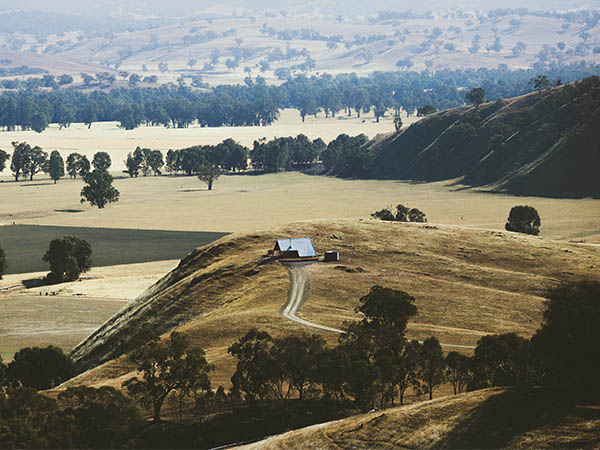
Glamp in a modern eco-hut at Kimo Estate, surrounded by the stunning rural beauty of a working 7000-acre sheep and cattle farm. (Image: Destination NSW)
Over the border in Victoria, signs to Beechworth, considered to be one of the prettiest towns in the country, Rutherglen, with its wineries and seasonal local produce menus at the likes of Jones Winery & Vineyard, and Glenrowan, the site of Ned Kelly’s last stand, are equally tempting to follow.
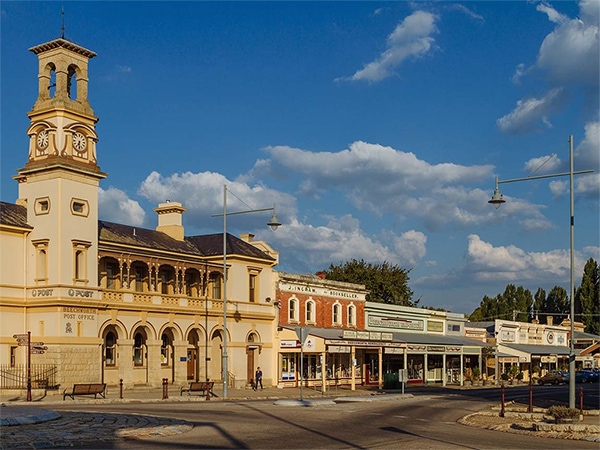
Stroll the historic streets of Beechworth.
Add another night to the journey with a stay in Rutherglen at one of Mt Ophir Estate’s six luxury accommodation options including The Residence, the original heritage homestead of the estate, or the cosy Winemakers Cottage.
Barrelling down red dirt roads that lead to the next cache of jaw-dropping rock art and secret swimming spots, and crossing rivers by driving right through them: a Kakadu road trip might be easily ticked off the bucket list from Darwin but feels like an unforgettable adventure into uncharted territory.
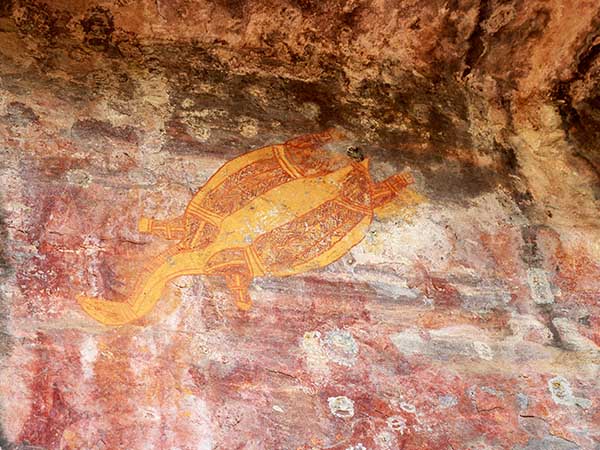
Transport yourself into Australia’s rich and ancient history by discovering rock art at Kakadu. (Image: Tourism Australia)
256 kilometres
Glamp in one of Cooinda Lodge’s Outback Retreats.
The twists and turns of the Kosciuszko Alpine Way, which carves a course up and over NSW’s Snowy Mountains through landscapes of mountain forests mythologised by Banjo Paterson, can be driven in under three hours. But we choose to slow right down and savour what this classic winter destination has to offer us in summer.
Setting out from Cooma and cruising past the huge glassy expanse of Lake Jindabyne, we roll into Kosciuszko National Park with its pine-clad ridges immortalised in The Man from Snowy River.
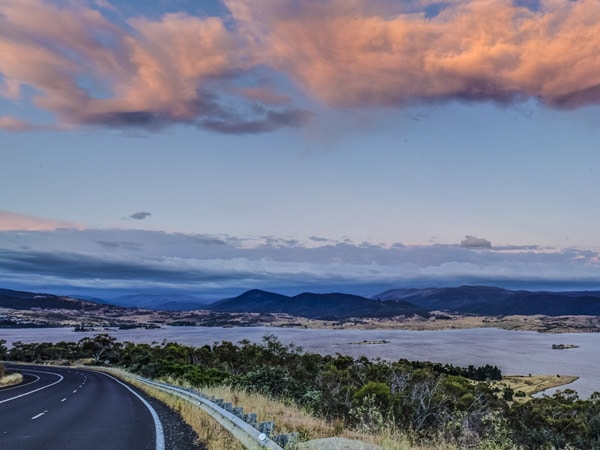
See the stunning Lake Jindabyne pool out before you on the drive from Cooma. (Image: Destination NSW)
We stopover in Thredbo to stretch our legs on Australia’s highest peak, hiking through alpine meadows strewn with granite outcrops and wildflowers. And we amble through snow gum forests that hug the Thredbo River on a track that starts right outside our digs.
With its loft bedroom kitted out with In Bed linens, a Japanese-inspired onsen and an uninterrupted view of Mt Kosciuszko, The Eastern Thredbo Village’s Cedar Cabin is heaven for connoisseurs of both design and the outdoors, rivalled only in style by its sister Oak Apartment. Its balcony is the perfect place to perch and contemplate our surrounds over a cup of coffee before continuing.

Spend a dreamy winter afternoon sequestered at Thredbo Village’s Cedar Cabin. (Image: Monique Eastern)
The Alpine Way winds for 90 more scenic minutes to Khancoban in the foothills of the Snowy Mountains, where we can choose to explore further: the Snowy Valleys Way forks from here – west to Beechworth in Victoria’s High Country and north to Gundagai in NSW’s Riverina.
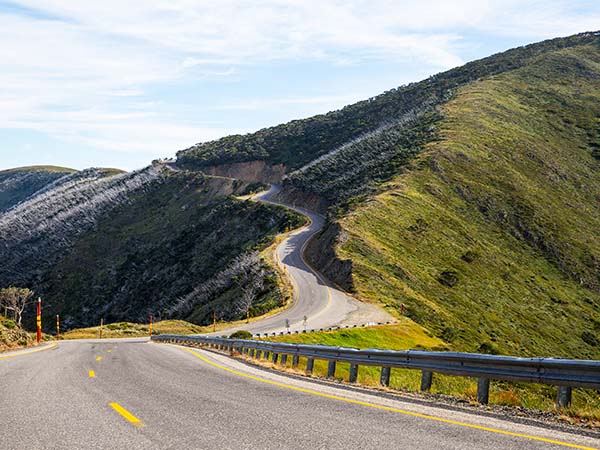
Marvel at the scenery that flanks the winding road along the Great Alpine Way. (Image: Visit Victoria)
175 kilometres.
Words by Imogen Eveson
Synonymous with Tasmania’s great outdoors, Cradle Mountain – Lake St Clair National Park is on many nature lovers’ lists. It’s on mine and my eldest son’s as we depart Hobart, hiking boots packed, the GPS set for Sheffield.
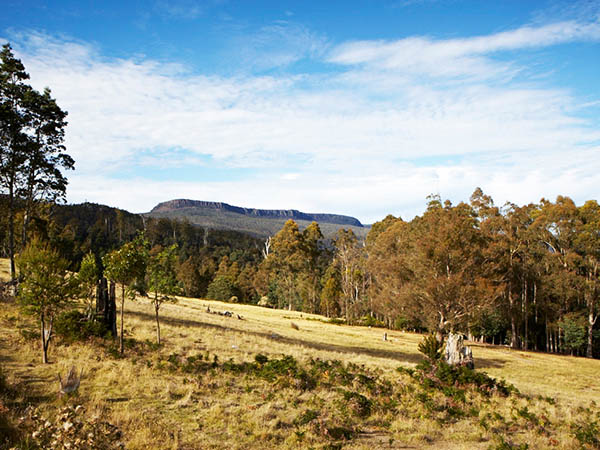
Cruise through the rolling hills and tranquil pastures of Tasmania’s Central Highlands. (Image: Tourism Tasmania/Adrian Cook)
We take the slow and scenic route through the Central Highlands and arrive at the gateway town, which doubles as an outdoor gallery with over 140 murals.
The impressive craggy face of Mt Roland is our silent neighbour as we explore the region and make day trips to Cradle Mountain, an easy 45 minutes’ drive away.
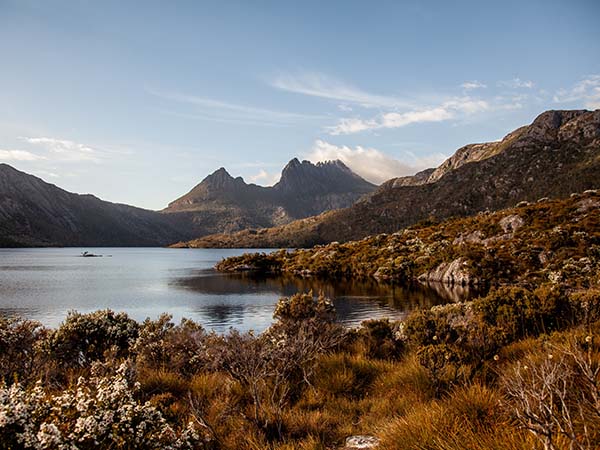
Witness the view of Cradle Mountain, surrounded by the serene waters of Dove Lake. (Image: Cultivate Productions)
321 kilometres
On the slopes of Mt Roland near Sheffield, Silver Ridge Retreat has nine self-contained cottages surrounded by wilderness.
Words by Jennifer Johnston
When I decided I wanted to cross the Nullarbor a friend gave me the best advice. What they said changed everything about the way I planned and performed the journey. It was, quite simply, “stop and see everything”.
First up, I eliminated time constraints. Also, I went solo. I knew that, chances were, this was a once-in-a-lifetime road trip and I didn’t want anything or anyone pressuring me to pick up the pace.

Nullarbor means “no trees” in Latin.
Ceduna, on Wirangu Country, is the Nullarbor’s most eastern town. After oysters and chilled wine at a roadside bar, I headed south down an unsealed road towards Point Sinclair and Cactus Beach. Along the way, I passed between a grey and a pink lake and wondered if I was tripping.
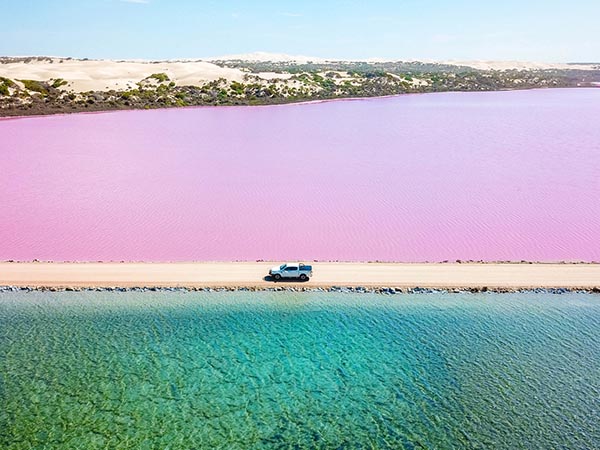
Pink meets green on the causeway that along Lake Macdonnell, a jewel of the Nullabor Plain. (Image: Riley M Williams)
An hour’s drive west of Yalata community is Head of Bight. Southern right whales can seasonally be seen there but I spied a white pointer at sunrise.
From there it took me eight hours to travel the 200-kilometre stretch to Eucla. Stopping at all six lookouts on the world’s largest limestone karst where the Bunda Cliffs drop into the pounding Southern Ocean was my kind of way to spend a whole day.
That afternoon I crossed into Western Australia and camped on Mirning Country under the biggest, starriest sky. To me, there’s no better accommodation on the Nullarbor.
Still ahead lay adventures to Weebubbie Cave, sand-logged Eucla Telegraph Station and a 20-rung ladder descent into Cocklebiddy Cave. I can’t even tell you how many more days that took and it doesn’t matter anyway. It was never about that.
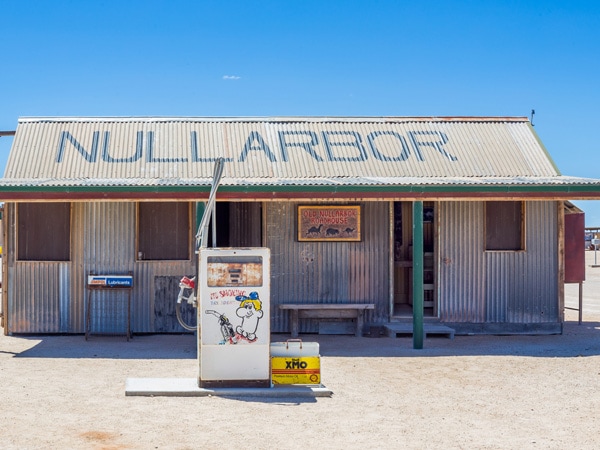
Nullarbor Roadhouse is one of the best places to stay or stop for food when crossing the Nullarbor. (Image: Michael Waterhouse Photography)
Eyre Highway (A1) from Ceduna SA to Norseman WA is 1200 kilometres.
Words by Elspeth Callender
Weaving its way through three states – NSW, Victoria and South Australia – the mighty Murray River can be navigated by water, of course, but the journey along and over it by road offers up the chance to really understand the significance of its presence on the landscape and to those who dwell close to it.
Aim to start the journey in the twin towns of Albury on the NSW side of the border or Wodonga on the Victorian side, and make sure to build in at least a day to explore them; Albury is a wonderfully cosmopolitan spot with art galleries, fine-dining restaurants like Bistro Selle and boutique accommodation such as Circa 1928, housed in a former Art Deco bank.
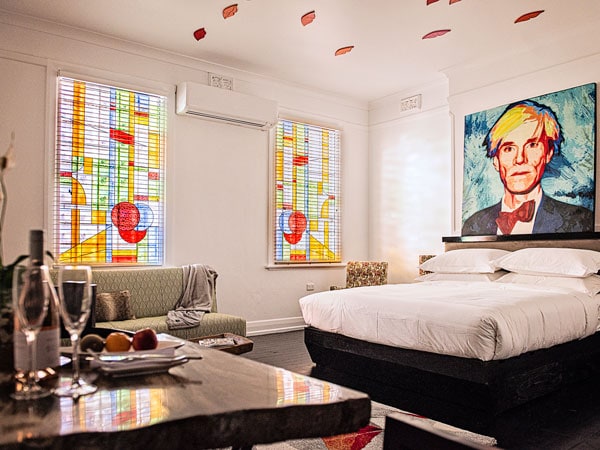
Stay at the elegant Circa 1928 in Albury.
Setting off, it is a 227-kilometre drive to the border town of Moama (twinned with Echuca on the opposite side of the river in Victoria), but there are ample diversions along the way to stretch this leg out to a two-day itinerary.
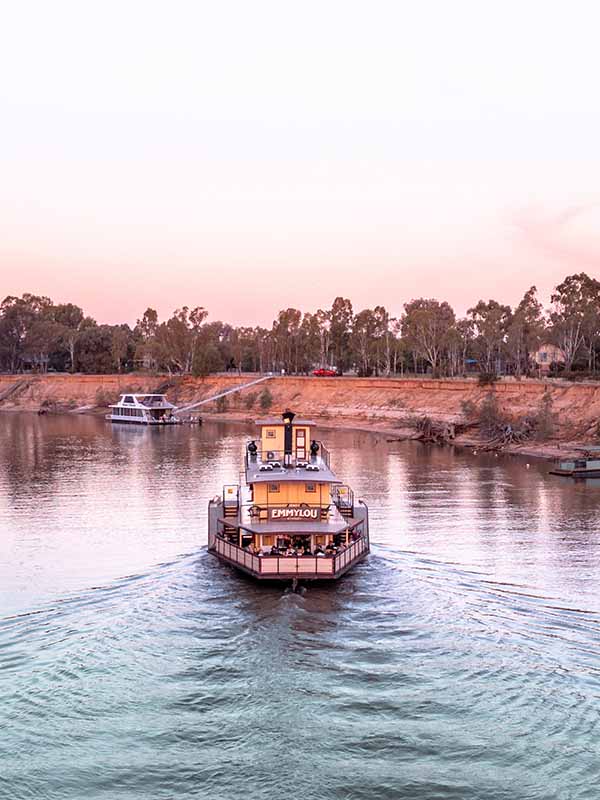
Relax on a luxurious boutique river cruise on the Murray River. (Image: Tyson Mayr)
Corowa, with its modest streetscape dominated by the heritage-listed Corowa Flour Mill (it’s now a whisky distillery and chocolate shop, so well worth the stop for takeaway); Yarrawonga, where Rich Glen Olive Estate produces its award-winning olive oils; and the laid-back holiday town of Lake Mulwala are all worth the time.
Driving the unrelentingly flat landscape, with its golden fields of lucerne and long-dead river red gum trunks forming eerily beautiful sculptures, it’s impossible to know when you are in one state or the other as the road traces the river, which has no inclination to be restricted to being just a line on a map.
Beyond Moama/Echuca, the road continues to the Victorian fruit bowl of Mildura, and then over yet another border into South Australia towards Renmark and coming to a conclusion at the mouth of the Murray in Goolwa.
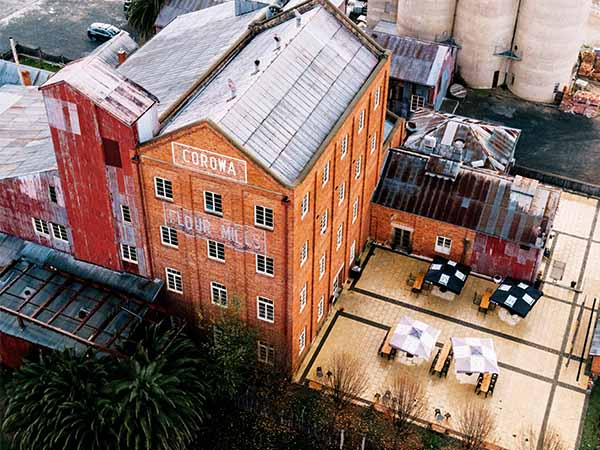
Discover decadence at Corowa Whisky & Chocolate. (Image: Destination NSW)
1045 kilometres, give or take a few clicks.
Words by Celeste Mitchell
Playlist choice is important for this one, because you’re never going to forget this road trip. With mountains to your left plunging into the Coral Sea to your right, the ocean-hugging tarmac between Palm Cove and the eco-certified Port Douglas is unforgettable road real estate.
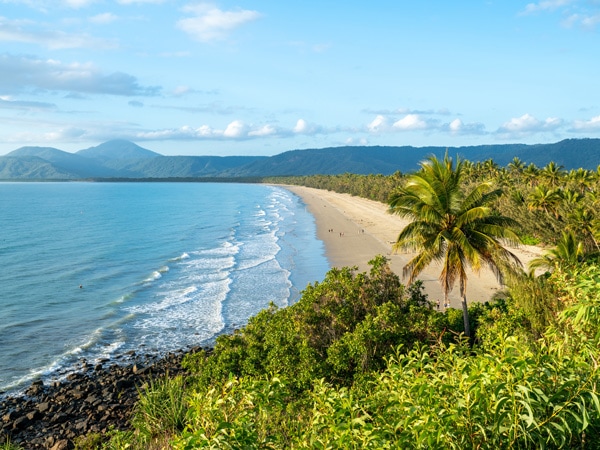
Enjoy sunset views over Four Mile Beach in Port Douglas. (Image: Tourism Australia)
It’ll only take you about an hour, end to end, but factor in detours to connect with Kuku Yalanji Traditional Owners and plunge into a pool at Mossman Gorge, or sail to Low Isles from Port Douglas to snorkel over coral gardens.
Spot crocodiles as you cross the Daintree River on the car ferry and drive the seam between two World Heritage-listed sites to reach the pinnacle.
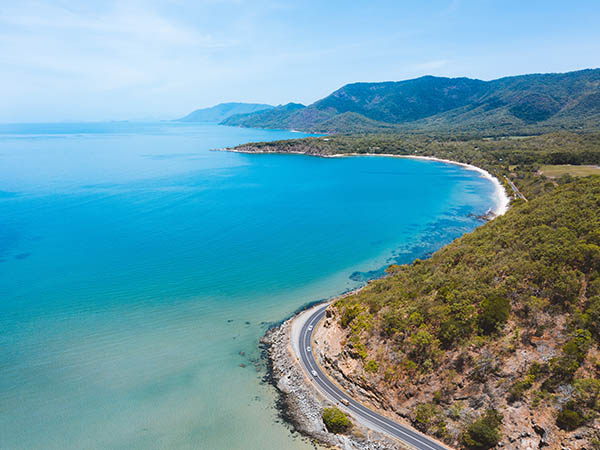
The road snakes along azure waters on this unforgettable drive. (Image: Tourism And Events Queensland)
140 kilometres
At the stunning new-look Silky Oaks Lodge.
Words by Celeste Mitchell
Outback drives don’t come more elemental than the one to and through South Australia’s majestic Ikara/Flinders Ranges National Park.
From Adelaide it is a 5.5-hour drive ever northwards to reach the park and the magnificence that is Wilpena Pound.
Known as Ikara in the language of the Adnyamathanha people, and meaning ‘meeting place’, the name hints at the deep cultural significance that this awe-inspiring natural wonder offers to those who have dwelt here for thousands of years.
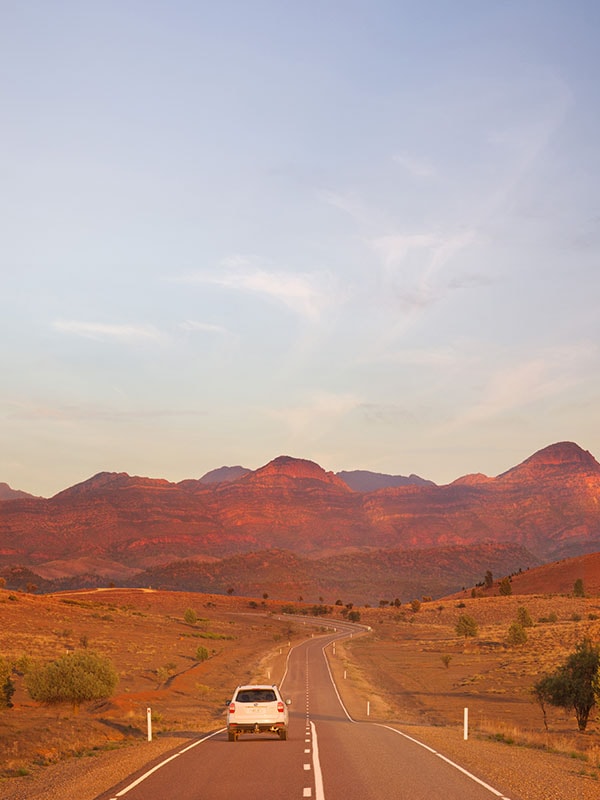
Feel the essence of the outback as you drive through the culturally significant site of Ikara/Wilpena Pound. (Image: Australian Tourism Commission)
Exploring this lunar landscape can involve everything from hikes to scenic flights to tracing Aboriginal Dreaming seams, and should be suitably indulged in over numerous days.
Luckily there are plentiful accommodation options that not only provide a comfortable (even luxurious) base, but also show due respect to the beauty and history of this truly unique landscape, from Wilpena Pound Resort to Rawnsley Homestead to Arkaba.
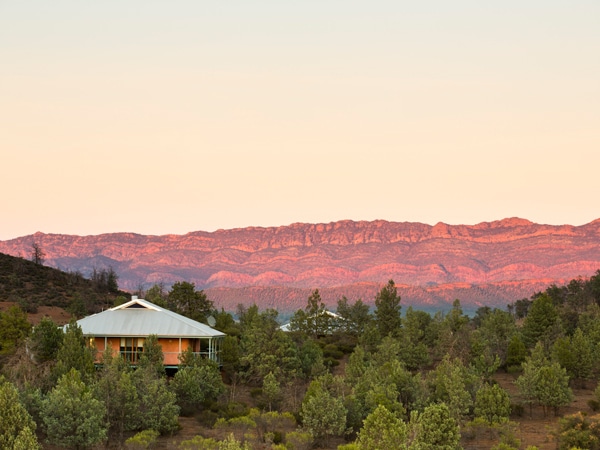
Sunset on the Elder Range from the Eco Villas at Rawnsley Park.
Roughly 450 kilometres from Adelaide to Ikara/Flinders Ranges National Park.
Download our beautifully illustrated map of the Great Ocean Road and Geelong.
With such icons of nature as the 12 Apostles, the Otways and not to mention the sheer undulating splendour of Victoria’s rugged coastline as it wends its way west of Melbourne to prioritise on your Great Ocean Road itinerary, you might forget that one of Australia’s most famous road trips also makes for a pretty great culinary journey. And it doesn’t take long to get going.
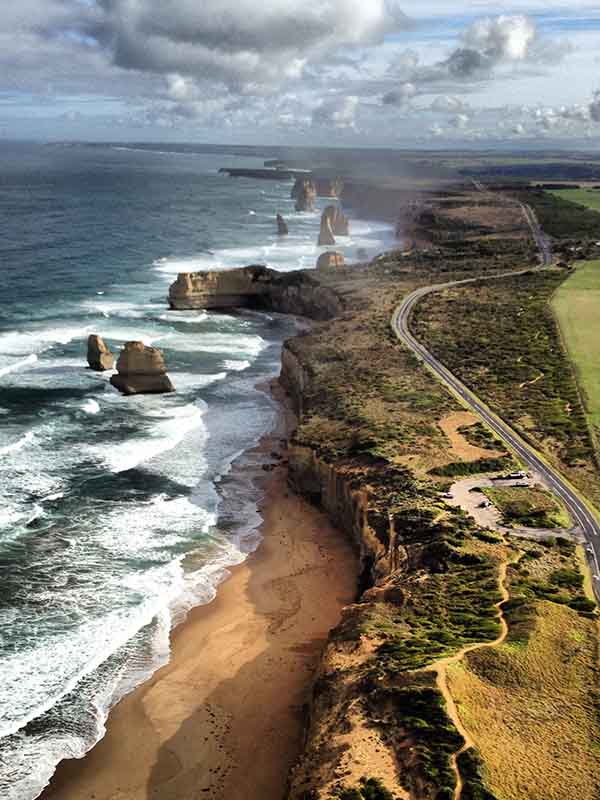
The incredible natural beauty of the twelve apostles is world-renown. (Image: 12 Apostles Helicopters)
Make a date with MoVida Lorne, where Spanish flavours are brought to life with local produce that befits this seaside town with a hint of the Mediterranean about it.
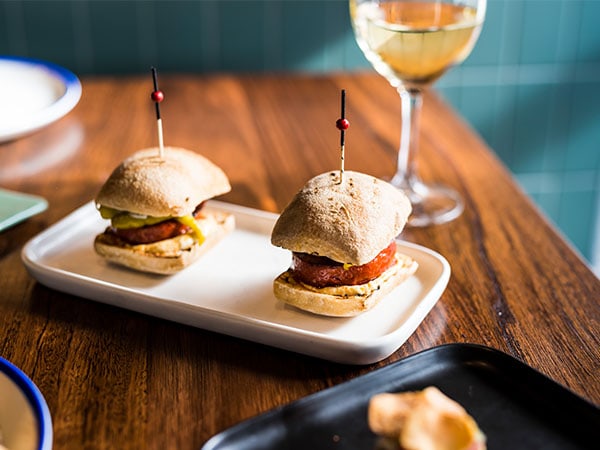
Treat your taste buds with a trip to MoVida Lorne and experience a unique fusion of Spanish and local flavours.
Or meander a further half hour to Wye River, where Wye General Store serves as a dynamic hub for locals and a destination, rather than a pit stop, for road-trippers in itself with its on-trend all-day brunch menu and geographically blessed location.
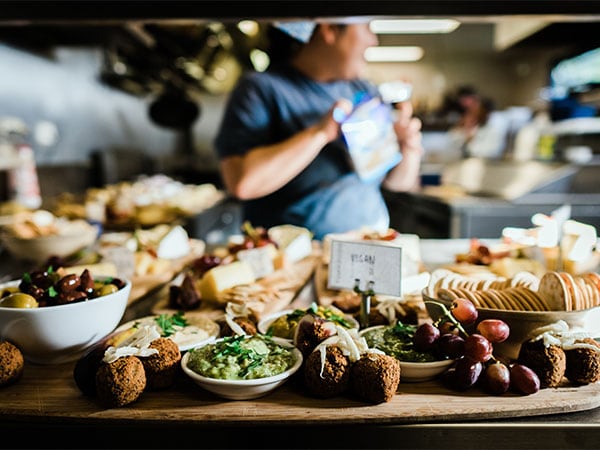
Fuel up at the Wye River General Store (Image: Visit Victoria)
In colourful Port Campbell, you’ll find Forage on the Foreshore, a heartfelt family-run restaurant that does exactly what it says on the tin; its all-day menu hinges on ingredients that are grown, produced or foraged locally on the Great Ocean Road and surrounding hinterland.
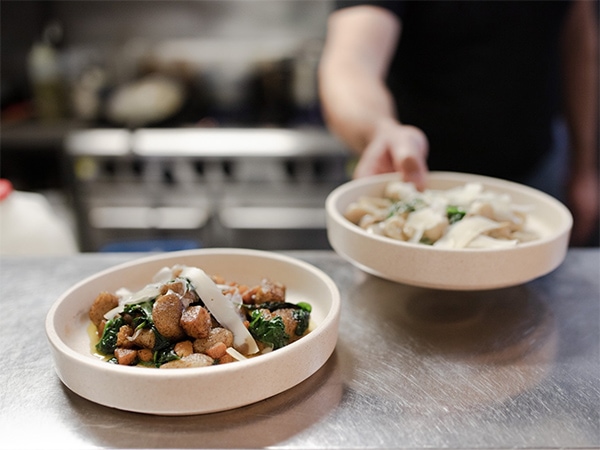
A meal at Forage on the Foreshore can be the perfect bookend to an excellent day’s sightseeing
Further west in Warrnambool, Pavilion Café & Bar encapsulates Aussie beach life from its lofty waterfront position in an architectural building: deck poised to soak in the sunshine and sea air, great coffee and an ocean- and paddock-to-plate menu.
Then drop anchor in the historic fishing village of Port Fairy, imbued with the creative spirit of its community: Merrijig is Victoria’s oldest inn, serving up fresh, seasonal fare from its kitchen and quaint accommodation, while the old bluestone Oak & Anchor Hotel has been recently reimagined as boutique accommodation with a bar and restaurant to boot.
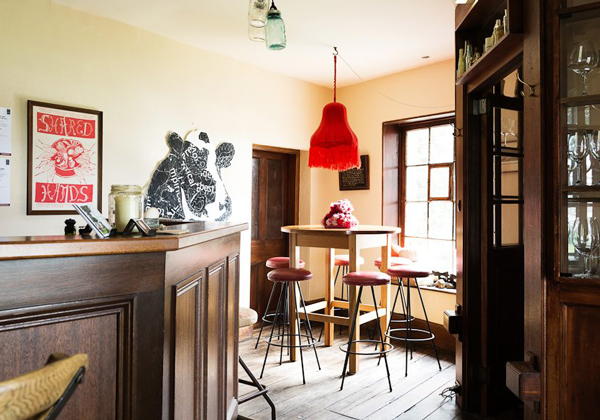
The Merrijig Inn, Port Fairy, retains its old-world feel.
Lorne to Port Fairy is 232 kilometres.
The iconic Big Lap is the journey taken to circumnavigate the country at its edge, travelling mainly on Highway 1, which clocks in at about 14,500 kilometres and links almost every mainland state and territory capital.
Considered the longest national highway on Earth, it includes the Princes Highway, Eyre Highway, Great Northern Highway, Stuart Highway, Bruce Highway and Pacific Highway, among others.
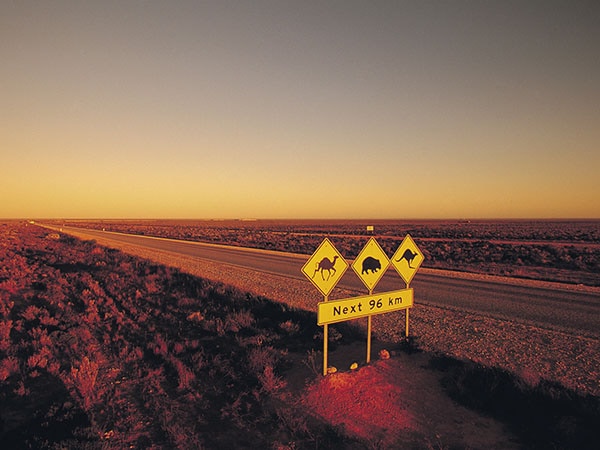
Hit the open road on the longest national highway on earth. (Image: South Australian Tourism Commission/Adam Bruzzone)
Tasmania is an added extra; start in Launceston, take the A10 from Strahan to Hobart, then the Great Eastern Drive up to Freycinet, before looping back in to where you started (adding 890 kilometres to your total).
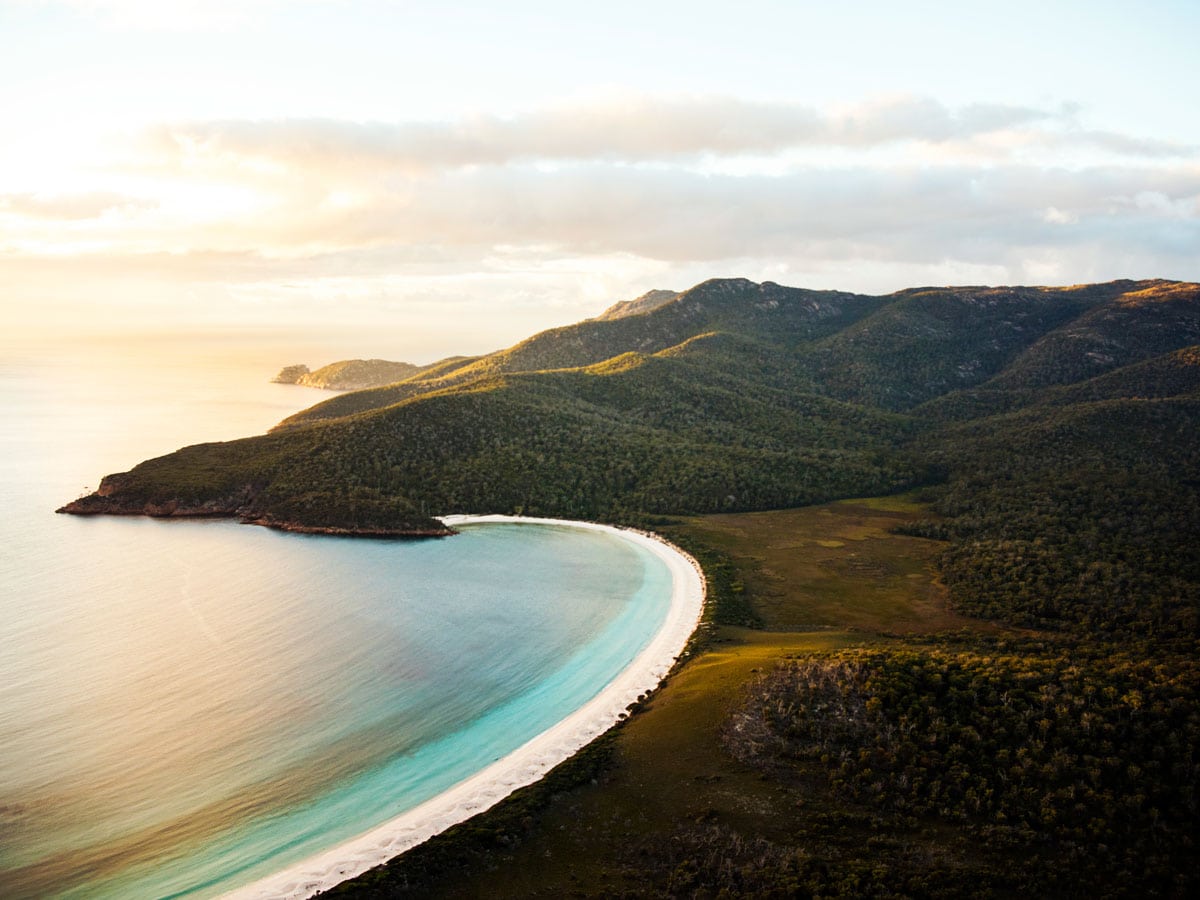
Wineglass Bay at sunrise in Freycinet National Park, Tasmania. (Image: Lauren Bath)
As for how long the whole thing will take, you should allow 10 to 12 months to really get the most out of the experience, and even then you probably won’t see everything. Maybe it should be refashioned as the Big Laps.
How to pick one location in a year-long odyssey of amazingness? Let’s just say sleeping under the canopy of the southern skies in a tent, van or swag is probably the most uniquely Australian accommodation you can find.
LEAVE YOUR COMMENT